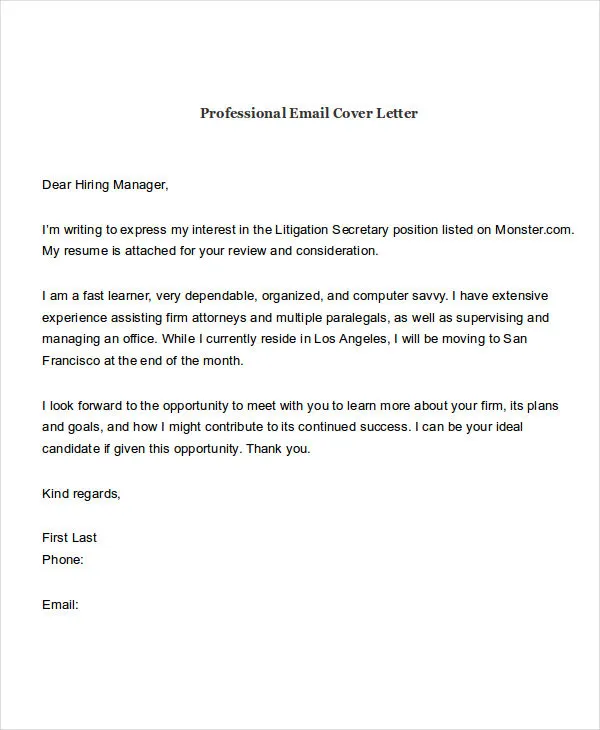Crafting a Winning Cover Letter Email
In today’s competitive job market, a well-crafted cover letter email can be the key to unlocking your dream job. It’s often the first point of contact between you and a potential employer, making it crucial to make a positive and lasting impression. This guide will walk you through every step of creating a cover letter email that not only grabs attention but also effectively showcases your skills and experience. We’ll delve into the essential components, from the subject line to the call to action, and provide actionable tips to ensure your email stands out. Whether you’re a seasoned professional or just starting your career, mastering the art of the cover letter email is a vital skill for any job seeker. Let’s get started on crafting an email that lands you an interview.
Understanding the Purpose of a Cover Letter Email
A cover letter email serves a dual purpose. First, it introduces you to the hiring manager and provides a concise overview of your qualifications. Second, it serves as a gateway to your attached resume and cover letter, encouraging the recipient to delve deeper into your application. Think of it as a carefully curated summary designed to pique the interest of the reader and compel them to learn more about you. This email provides a concise narrative that highlights your key strengths, aligns them with the job requirements, and establishes a clear connection between your skills and the company’s needs. By understanding this fundamental purpose, you can tailor your email to effectively communicate your value proposition to the employer and make it more likely to get your application noticed.
Why a Cover Letter Email is Essential
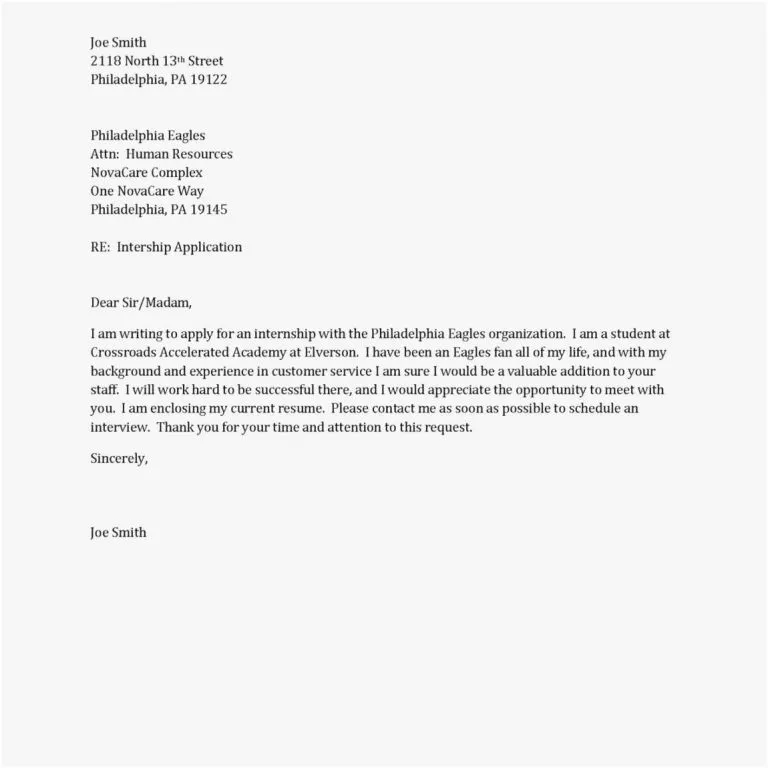
In the digital age, the cover letter email has become more critical than ever. It’s often the first impression you make on a potential employer, and it sets the tone for your entire application. Unlike a traditional cover letter, the email allows for a direct and immediate form of communication. It also provides the opportunity to demonstrate your writing skills, your understanding of the job, and your enthusiasm for the role. A well-written cover letter email personalizes your application and provides context, setting you apart from other applicants who may simply send a resume without any introduction. By using an email, you show that you’re tech-savvy, attentive to detail, and eager to engage with the employer. This can significantly increase your chances of landing an interview.
Key Components of a Cover Letter Email
A compelling cover letter email consists of several key elements that work together to create a strong first impression. These elements include a professional subject line, a personalized greeting, a brief introduction of yourself, a concise summary of your relevant skills and experience, a clear call to action, and a professional closing. Each component should be carefully considered and tailored to the specific job and company. The goal is to provide a snapshot of your qualifications, connect them to the job requirements, and encourage the reader to review your resume and cover letter. By meticulously crafting each part of the email, you increase your chances of capturing the hiring manager’s attention and securing an interview. The attention to detail in your email demonstrates your commitment and professionalism, which are highly valued by employers.
The Subject Line The First Impression
The subject line is the first thing a hiring manager sees, so it’s critical to make it count. It should be clear, concise, and relevant to the job you’re applying for. Avoid generic subject lines like “Job Application” or “Resume.” Instead, use the job title and your name. For example, “Software Engineer Application - John Doe” is more effective because it immediately identifies the purpose of the email and the applicant. If the job posting specifies a particular subject line format, always follow those instructions. Keep it brief, professional, and free of any unnecessary punctuation or symbols. The subject line’s primary goal is to ensure your email is opened and read, so it should immediately signal its relevance and importance to the recipient.
Formatting Your Cover Letter Email
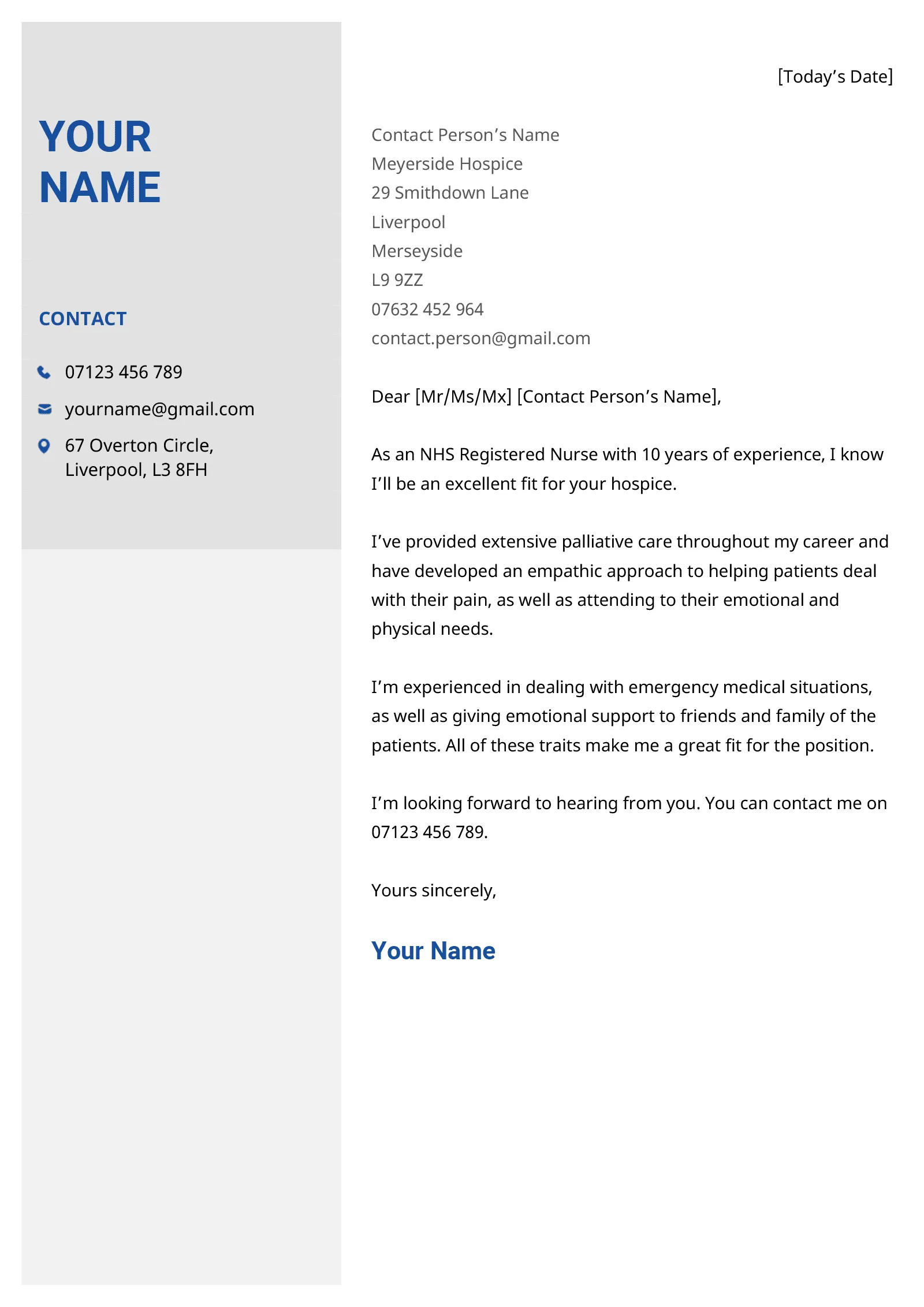
Formatting your cover letter email properly is essential for readability and professionalism. Use a clean, easy-to-read font like Arial or Times New Roman. Keep the font size between 10 and 12 points. Use white space effectively to break up large blocks of text and make it easier to scan. Divide the email into short paragraphs and use bullet points to highlight key skills or accomplishments. Avoid using flashy colors or excessive formatting that could distract from the content. Proofread carefully to eliminate any typos or grammatical errors. Proper formatting demonstrates attention to detail and respect for the reader’s time. By following these guidelines, you can ensure your email is both visually appealing and easy to digest, which is crucial for making a positive impression.
Keep It Concise and Professional
Keep your cover letter email concise and to the point. Hiring managers are busy people who often receive hundreds of applications, so they appreciate emails that get straight to the point. Aim for a length of no more than four to five brief paragraphs. Start with a brief introduction, quickly highlight your key qualifications, and clearly state why you’re a good fit for the job. Avoid repeating information that’s already in your resume and cover letter. Use strong, active verbs to describe your accomplishments. Maintain a professional tone throughout, avoiding slang or informal language. By respecting the reader’s time and focusing on the most relevant information, you’ll increase the likelihood of your email being read and your application being considered.
Personalizing Your Cover Letter Email
Personalization is key to making your cover letter email stand out. Generic, mass-produced emails are easily spotted and often disregarded. Instead, tailor each email to the specific job and company. Research the company and the hiring manager, if possible. Address the hiring manager by name if you know it; if not, use a professional greeting like “Dear Hiring Manager.” Mention something specific that caught your attention about the company or the job. Show that you understand the company’s values and the job’s requirements. Briefly explain why you’re interested in the specific role and how your skills and experience align with the company’s needs. By personalizing your email, you demonstrate that you’ve taken the time to learn about the opportunity and that you’re genuinely interested in the position.
Highlighting Your Skills and Experience
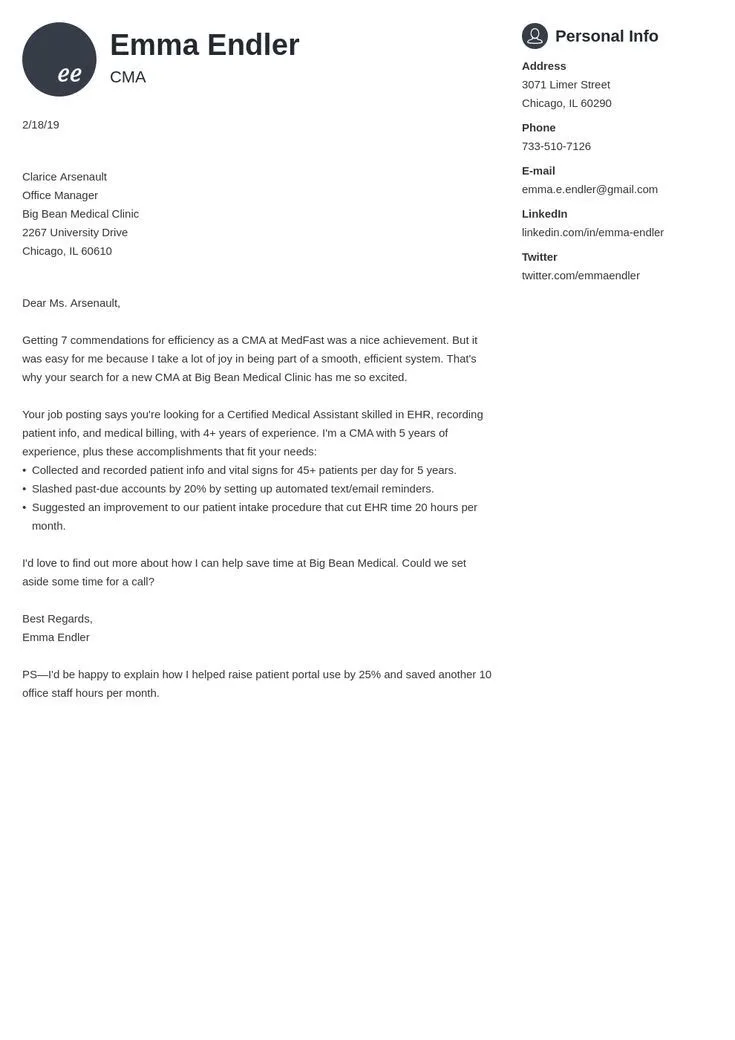
In your cover letter email, strategically highlight the skills and experiences that are most relevant to the job. Review the job description carefully and identify the key requirements. Then, select two or three of your most relevant skills and accomplishments and briefly describe them in the email. Quantify your achievements whenever possible using numbers or data to demonstrate your impact. For example, instead of saying “Managed social media campaigns,” say “Managed social media campaigns that increased engagement by 30%.” Use action verbs to describe your responsibilities and achievements. Tie your skills to the job’s specific needs, demonstrating how you can contribute to the company’s success. This targeted approach helps the hiring manager quickly see your value proposition and understand why you’re a strong candidate.
Tailoring Your Email to the Job Description
Carefully tailor your cover letter email to match the job description. Analyze the job posting to identify the key requirements, skills, and qualifications the employer is seeking. Use the same keywords and phrases used in the job description to show that you understand the role and have the necessary qualifications. Explain how your skills and experience directly align with the specific needs outlined in the job posting. Highlight the accomplishments and experiences that are most relevant to the position, and avoid including irrelevant information. By tailoring your email to the job description, you demonstrate that you’ve carefully considered the role and are a strong fit for the position. This targeted approach significantly increases your chances of getting noticed by the hiring manager.
Adding a Compelling Call to Action
Include a clear and compelling call to action (CTA) at the end of your cover letter email. A CTA encourages the recipient to take the next step. State your interest in the position and suggest a follow-up. For example, “I am eager to learn more about this opportunity and discuss how my skills and experience can benefit your team. I have attached my resume and cover letter for your review. Please feel free to contact me at your convenience to schedule an interview.” Make it easy for the hiring manager to respond by including your phone number and email address. A strong CTA shows your enthusiasm and initiative, making it more likely that you’ll get a response and move forward in the hiring process. This simple yet effective addition can dramatically increase your chances of securing an interview.
Proofreading and Editing Your Email
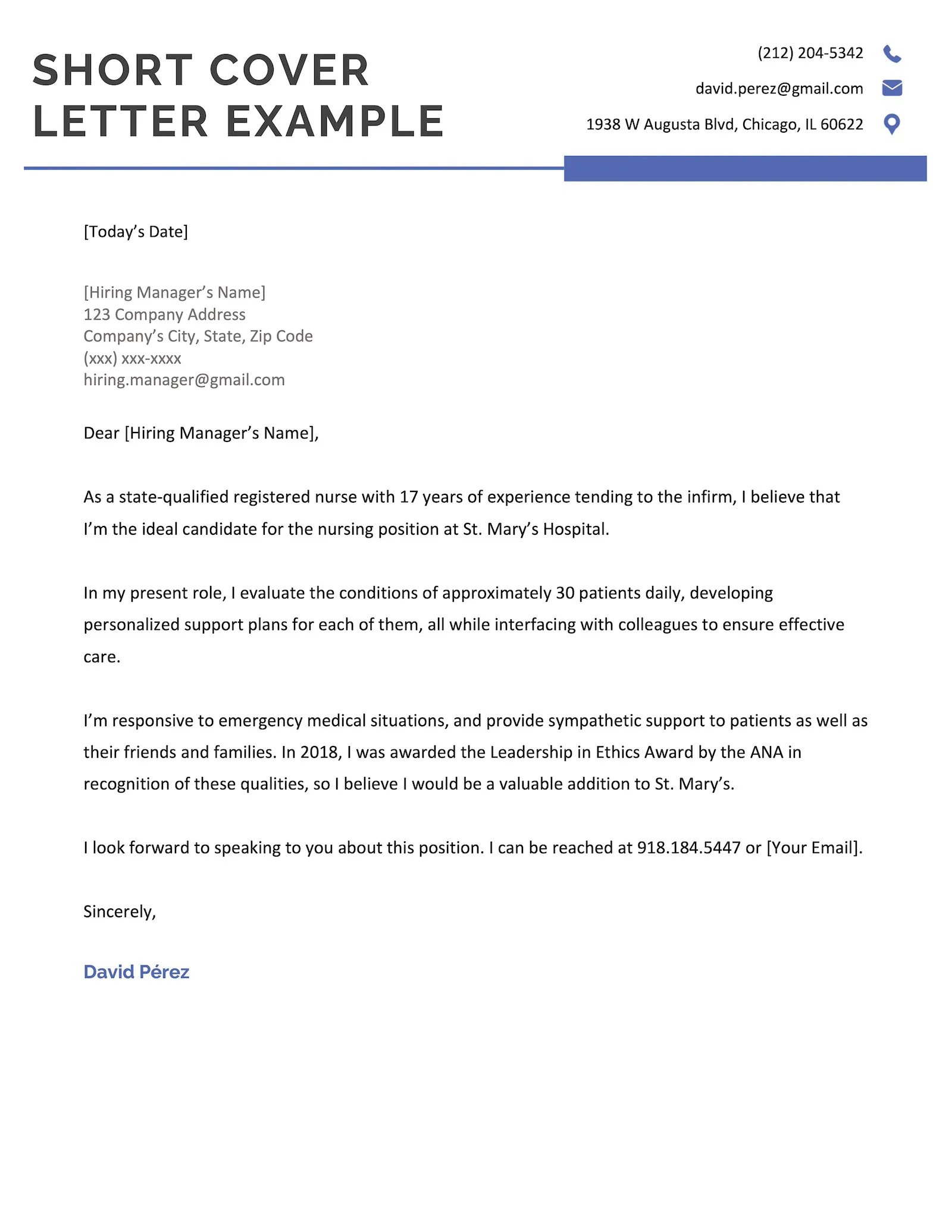
Proofreading and editing your cover letter email is crucial to ensure professionalism and accuracy. Typos, grammatical errors, and poor sentence structure can reflect poorly on your attention to detail and communication skills. Before sending your email, carefully review it for any errors. Check for spelling mistakes, grammatical errors, and punctuation mistakes. Read the email aloud to catch any awkward phrasing or unclear sentences. Ensure that the tone is professional and appropriate for the job. Consider asking a friend, family member, or career advisor to proofread your email as a second set of eyes can often catch errors you may have missed. A polished, error-free email will make a positive impression on the hiring manager and demonstrate your commitment to excellence.
Common Mistakes to Avoid
Avoid common mistakes that can undermine your cover letter email. Do not send a generic, impersonal email; always tailor it to the specific job and company. Do not be overly verbose; keep your email concise and to the point. Avoid using slang or informal language, and maintain a professional tone throughout. Do not make any spelling or grammatical errors. Do not attach your resume or cover letter as a single document; use separate attachments. Avoid mentioning salary expectations in the email unless specifically requested in the job posting. Steer clear of negative language or complaining about past employers. By avoiding these common pitfalls, you can ensure your cover letter email is well-received and increases your chances of landing an interview.
Sending Your Cover Letter Email Best Practices
Follow these best practices when sending your cover letter email. Always attach your resume and cover letter as separate PDF or Word documents. Use a professional email address. Double-check the recipient’s email address to avoid sending it to the wrong person. Send the email during business hours, ideally on a weekday. Follow up with the hiring manager one week after sending the email if you haven’t heard back. Keep your email address professional, and avoid using childish or unprofessional names. Consider saving a copy of the sent email for your records. By adhering to these best practices, you demonstrate your professionalism and increase your chances of making a positive impression. Following up is also a good sign of your interest in the position, and can help get you noticed.
